Dwarf Puffer Care Guide: Big Personality in a Tiny Freshwater Predator
Don’t let their size fool you—Dwarf Puffers (Carinotetraodon travancoricus), also known as Pea Puffers, are tiny fish bursting with attitude. These miniature predators have become a favorite among aquarists for their expressive eyes, curious behavior, and interactive nature. But with that bold personality comes a set of unique care requirements. Unlike many small community fish, Dwarf Puffers are territorial, intelligent, and best kept in a species-only tank. In this care guide, we’ll show you how to create the perfect home for your pint-sized powerhouse—from ideal tank setup to diet, tank mates, and behavior management.
- Quick Care Stats
- Species Overview
- Appearance
- Tank Requirements
- Tank Setup
- Diet and Feeding
- Tank Mates
- Breeding
- Diseases & Treatment
- Frequently Asked Questions (FAQs)
Quick Care Stats
- Scientific Name: Carinotetraodon travancoricus
- Common Name: Dwarf Puffer, Pea Puffer, Pygmy Puffer
- Origin: Southwest India (Kerala, Malabar Coast)
- Max Length: 1 inch (2.5 cm)
- Minimum Tank: 5 gallons (19 liters)
- Stocking: 1–2 puffers per 5 gallons; cautious with tankmates
- Temperament: Semi-aggressive, territorial
- Feeding: Carnivorous; live or frozen snails, shrimp, worms
- Breeding: Egg-layer; very difficult in captivity
- Habitat: Slow-moving rivers, ponds, and wetlands
- Tank Setup: Heavily planted, low flow, hiding spots
- Active Tank Levels: All levels, primarily mid to bottom
- Temperature: 74–80°F (23–27°C)
- pH: 6.8–7.8
- Water Hardness: 8–15 dGH
- Lifespan: 3–5 years
Species Overview
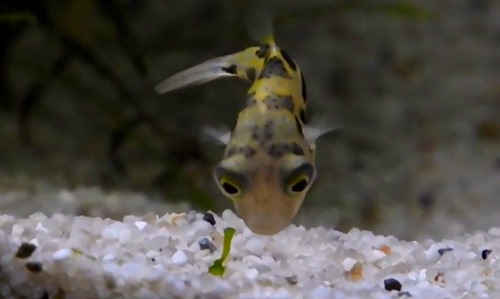
Dwarf Puffers, scientifically known as Carinotetraodon travancoricus, also called Pea Puffers or Malabar Puffers, are among the smallest pufferfish species, reaching a maximum length of about 1.4 inches (3.5 cm). Endemic to the freshwater rivers and lakes of Southwest India, particularly the Pamba River and Vembanad Lake in Kerala, these fish inhabit slow-moving, heavily vegetated waters rich with aquatic plants.
Their golden-yellow bodies, adorned with dark spots, and large, expressive eyes make them a striking presence in their natural environment. The dense vegetation in their habitat provides cover from predators and supports a rich ecosystem of small invertebrates and crustaceans, which form the core of their carnivorous diet.
The natural habitat of Dwarf Puffers features clear, warm waters with temperatures ranging from 23 to 28°C and a neutral to slightly alkaline pH. These slow-flowing rivers and lakes, often fringed with plants like water lettuce and submerged grasses, create an ideal environment for these tiny fish to thrive. Their small size allows them to navigate through thick vegetation, where they hunt for prey such as snails and microcrustaceans. Dwarf Puffers are particularly vulnerable to habitat degradation from agricultural runoff and deforestation, which threaten the pristine conditions of their limited range.
A remarkable trait of Dwarf Puffers is their ability to inflate their bodies with water when threatened, a defense mechanism that causes their skin spines to erect, deterring predators. This behavior, combined with their bold and curious nature, makes them stand out in their ecosystem. Their intelligence is evident in their hunting strategies, as they actively seek out and crush small snails with their beak-like teeth. Despite their small size, Dwarf Puffers exhibit territorial behavior, often staking out small patches of vegetation in their habitat, adding to their unique ecological role in the freshwater systems of Southwest India.
Appearance
Dwarf Puffers are instantly recognizable for their compact, expressive appearance, which enhances their charismatic presence in aquariums. Key features include:
Base Color: Their bodies are olive-green to yellowish, adorned with irregular dark spots or blotches that vary in intensity. These markings often form a mottled pattern, which can appear more vibrant under optimal conditions and dim in stressful environments.
Fins: Small, rounded, and translucent, their fins may show faint yellow or green hues, particularly in males. The fins are delicate and used for precise, darting movements, reflecting their agile nature.
Body Shape: Compact and rounded, Dwarf Puffers have a distinctive “beak-like” mouth adapted for crushing hard-shelled prey like snails. Their large, expressive eyes contribute to their alert, curious demeanor, allowing them to scan their environment effectively.
Sexual Dimorphism: Males are brighter, with more intense coloration and a prominent dark midline stripe running along their belly, often accompanied by a wrinkled patch of skin behind the eyes (sometimes called the “eye wrinkle”). Females are plainer, rounder, and lack the midline stripe and eye wrinkle, with less vivid markings.
Size: Reaching up to 1 inch (2.5 cm), Dwarf Puffers are true nano fish, making them perfect for small, detailed aquascapes where their intricate patterns stand out.
Additional Notes on Appearance
The vibrancy of their coloration depends on diet, water quality, and stress levels. A nutrient-rich diet with live foods can enhance their yellow-green hues and spot contrast, while poor conditions may cause fading. Their ability to change color slightly in response to mood or environment adds to their dynamic appeal in well-maintained tanks.
Tank Requirements
A minimum tank size of 5 gallons is sufficient for 1–2 Dwarf Puffers, but a 10-gallon tank is ideal for a small group of 2–3 or when including compatible tankmates. Due to their territorial nature, stock cautiously, aiming for 1 puffer per 3–5 gallons to minimize aggression and provide ample space. Stable water parameters are critical for their health:
- Temperature: 74–80°F (23–27°C)
- pH: 6.8–7.8
- Hardness: 8–15 dGH
- Ammonia/Nitrite: 0 ppm
- Nitrate: <20 ppm
A secure, tight-fitting lid is essential, as Dwarf Puffers may jump when startled, especially during feeding or tank maintenance. Regular water testing with a reliable test kit is recommended to maintain stability, with weekly water changes of 20–30% to keep water pristine. Avoid sudden parameter shifts to prevent stress, which can lead to health issues or aggression.
Tank Setup
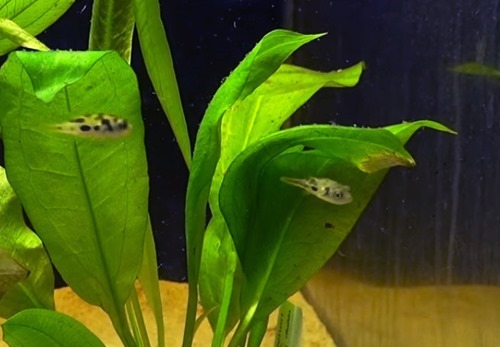
To mimic their natural habitat in Kerala’s vegetation-rich waters, create a densely planted tank with plenty of cover and hiding spots. Use plants like Java fern, Anubias, Cryptocoryne, or floating species such as water lettuce or Salvinia to provide shelter and replicate their preference for lush environments. A fine gravel or sand substrate mimics their natural riverbed habitat and enhances their coloration against a darker backdrop. Add driftwood, smooth rocks, or small caves to offer hiding spots and break lines of sight, which helps reduce territorial disputes in group setups.
A low-flow filtration system, such as a sponge filter or a gentle hang-on-back filter, is ideal to maintain the calm water conditions they prefer, as strong currents can stress them. A reliable aquarium heater is necessary to keep temperatures stable, as fluctuations can exacerbate aggression or weaken their immune system. Subdued or adjustable lighting, such as dimmable LEDs, suits their preference for shaded environments; floating plants can further diffuse light and create a naturalistic feel. Ensure the tank is fully cycled before introducing puffers to avoid ammonia or nitrite spikes, which they are particularly sensitive to.
Diet and Feeding
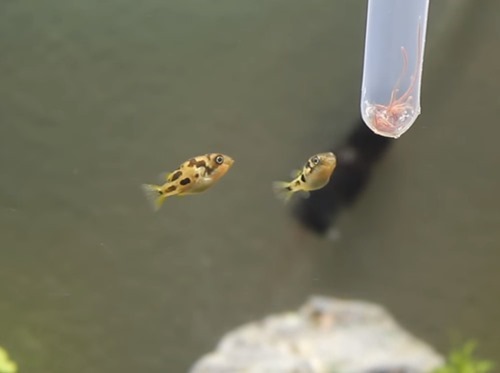
Dwarf Puffers are strict carnivores with a specialized diet centered on hard-shelled and live foods to maintain their continuously growing beaks. Their “beak-like” mouths are adapted for crushing prey, and a varied diet is essential for health and dental maintenance. Recommended foods include:
- Live Foods: Small snails (e.g., bladder snails, ramshorn snails, or pond snails) are critical, as chewing their shells naturally wears down the puffers’ beaks, preventing overgrowth. Live brine shrimp, daphnia, and micro worms are also excellent, stimulating their hunting instincts and providing high protein.
- Frozen Foods: Frozen bloodworms, brine shrimp, or mysis shrimp are readily accepted and offer a convenient alternative to live foods. Thaw small portions before feeding to ensure they are easily consumed, and avoid overfeeding to prevent waste buildup.
- Dry Foods: Flake or pellet foods are typically ignored, as they do not meet the puffers’ dietary needs or provide the necessary texture for beak maintenance. If dry foods are used, choose micro-pellets high in protein, but prioritize live or frozen options.
- Feeding Frequency: Feed small portions once daily, offering an amount they can consume within 1–2 minutes to avoid polluting the tank. For variety, alternate between snails and other live/frozen foods throughout the week.
Feeding Tips
- Provide a steady supply of small snails, either bred in a separate tank or purchased, to ensure consistent beak wear. A small snail-breeding tank (2–5 gallons) with fast-reproducing species like bladder snails can sustain their diet.
- Monitor feeding to ensure all puffers eat, as dominant individuals may monopolize food in group setups. Scatter food across the tank to reduce competition.
- Remove uneaten food, especially snail shells, promptly to maintain water quality, as decomposing matter can spike ammonia levels in small tanks.
A diet rich in snails and live foods keeps Dwarf Puffers healthy, active, and vibrant, while preventing dental issues that can lead to serious health complications.
Tank Mates
Behavior and Temperament
Dwarf Puffers are semi-aggressive and territorial, with bold personalities that belie their tiny size. They are highly curious and intelligent, often exploring their environment or interacting with their owners, but their unpredictable nature requires careful tankmate selection. They may nip at slow-moving or long-finned fish, mistaking fins for food or asserting dominance. Keeping them in small groups (1–3) in a 10-gallon or larger tank can diffuse aggression, but close monitoring is essential, as individual temperaments vary. Puffers thrive best with plenty of hiding spots and visual barriers to reduce territorial disputes, and their surface-to-mid-level swimming habits mean they rarely interact with bottom-dwellers.
Suitable Tankmates
Choose fast-moving, peaceful species that can coexist with the puffers’ territorial tendencies and share similar water requirements. Ideal tankmates include:
- Fish: Kuhli loaches, otocinclus catfish, or small, fast-moving species like chili rasboras or ember tetras. These fish occupy different tank levels or are agile enough to avoid nipping.
- Invertebrates: Small shrimp, such as cherry shrimp or ghost shrimp, can work, but puffers may eat them, especially smaller or slower individuals. Snails (e.g., bladder, ramshorn, or nerite snails) are excellent, serving as both tankmates and a dietary staple.
- Avoid: Slow-moving fish (e.g., guppies, angelfish), long-finned fish (e.g., bettas, fancy guppies), or aggressive species (e.g., cichlids, barbs) that may provoke or be targeted by puffers. Avoid other puffer species, as they may compete aggressively.
Tankmate Considerations
- Monitor interactions closely during introductions, as puffers may chase or nip new tankmates. Provide ample hiding spots and plants to create territories and reduce stress.
- Stock conservatively to avoid overcrowding, which can escalate aggression. A 10-gallon tank with 2–3 puffers and a few compatible tankmates is ideal.
- If shrimp are included, expect some losses, as puffers may view them as food. Larger, more robust shrimp (e.g., Amano shrimp) may fare better but are not guaranteed to be safe.
Breeding
Preparation for Breeding
Breeding Dwarf Puffers in captivity is rare and challenging due to their specific needs and territorial behavior, but it is possible with careful preparation. Set up a dedicated 10-gallon breeding tank to control conditions and protect eggs and fry. Include dense vegetation (e.g., Java moss, Java fern) or spawning mops to provide egg-laying sites, as females prefer to scatter eggs among fine surfaces. Maintain stable water parameters to encourage spawning:
- Temperature: 75–78°F (24–26°C)
- pH: Neutral, around 6.8–7.2
- Hardness: 8–12 dGH
- Water Quality: Ammonia and nitrite at 0 ppm, nitrates below 15 ppm.
Condition a breeding pair (one male to one or two females to reduce aggression) with a high-protein diet of live snails, bloodworms, and brine shrimp for 1–2 weeks to boost health and reproductive readiness. Use a gentle sponge filter to maintain water quality without disturbing eggs or fry, and ensure a secure lid to prevent jumping. Dim lighting and ample cover help reduce stress during the breeding process.
Breeding
Males initiate breeding by intensifying their coloration and displaying courtship behaviors, such as chasing females and flaring their fins. They may lead females to a chosen spawning site among plants or mops. Females scatter small, adhesive eggs (typically 5–20 per session) on plants, mops, or the substrate, often over several days. The eggs are tiny and difficult to spot, requiring careful inspection. To prevent predation, remove the adults to the main tank immediately after spawning, or carefully transfer the eggs to a separate hatching tank using a pipette or by moving the spawning medium. If eggs remain in the breeding tank, ensure no other fish are present, as they may consume the eggs.
Caring for Fry
Eggs hatch in 5–7 days at 75–78°F (24–26°C), with warmer temperatures potentially accelerating hatching to as little as 4 days. The fry are extremely small and delicate, requiring specialized care:
- Initial Feeding: For the first 3–5 days, feed infusoria, paramecium, or commercial liquid/powdered fry food designed for tiny fish. After 5–7 days, transition to newly hatched baby brine shrimp or micro worms to support growth.
- Nursery Tank: Use a bare-bottom or minimally decorated tank to simplify cleaning. Maintain pristine water quality with the same parameters as the breeding tank, performing small, daily water changes (5–10%) with aged, temperature-matched water to avoid shocking the fry.
- Growth and Development: Fry grow slowly, reaching about 0.3 inches (0.8 cm) in 4–6 weeks. Gradually introduce crushed micro-pellets as they grow, but continue offering live foods for optimal nutrition. Provide fine-leaved plants or spawning mops for cover to reduce stress.
Monitor fry for signs of fungal infections or poor growth, and separate larger fry if cannibalism occurs. With meticulous care, fry can reach juvenile size (0.7–1 inch) in 2–3 months, beginning to show their characteristic spots and coloration.
Diseases & Treatment
Dwarf Puffers are hardy but highly sensitive to poor water quality, which can lead to stress-related illnesses. Common health issues and treatments include:
- Ich (White Spot Disease): Characterized by white spots on the body or fins, scratching against surfaces, and lethargy. Treat by gradually raising the tank temperature to 78–80°F (26–27°C) for 3–5 days and adding aquarium salt (1 teaspoon per gallon, pre-dissolved) or a commercial ich medication (e.g., API Super Ick Cure), following instructions. Increase aeration during treatment, as warmer water holds less oxygen. Perform a 25% water change before and after treatment to maintain water quality.
- Overgrown Beaks: Caused by insufficient hard-shelled foods like snails, leading to elongated or misaligned beaks that impair eating. Prevent by providing a steady supply of small snails (e.g., bladder or ramshorn). If overgrowth occurs, consult an aquatic veterinarian for professional trimming, as improper handling can cause injury. Increase snail feedings to prevent recurrence.
- Bacterial Infections: Symptoms include cloudy eyes, lethargy, or skin lesions, often linked to poor water quality or injury from aggression. Improve water conditions with 25–30% water changes and ensure ammonia/nitrite levels are 0 ppm. Treat with a broad-spectrum antibacterial medication, such as Seachem Kanaplex or API Furan-2, following dosage instructions. Remove carbon from filters during treatment and complete the full course to prevent resistance.
- Stress: Indicated by faded colors, hiding, or reduced appetite, often triggered by poor water quality, overcrowding, or aggressive tankmates. Test and correct water parameters, reduce tank disturbances (e.g., dim lights, minimize tapping on glass), and ensure sufficient hiding spots. Check for incompatible tankmates and adjust stocking if necessary.
Prevention
Prevent most health issues with proactive care:
- Perform weekly 20–30% water changes using dechlorinated, temperature-matched water to maintain pristine conditions.
- Test water parameters regularly to ensure stability, particularly ammonia, nitrite, and nitrate levels.
- Provide a varied diet with ample snails to prevent beak overgrowth and support overall health.
- Quarantine new fish, plants, or snails for 2–4 weeks to avoid introducing pathogens.
- Avoid sudden changes in lighting, temperature, or tank setup to minimize stress.
Regular observation and early intervention are key to keeping Dwarf Puffers healthy and vibrant.
Frequently Asked Questions (FAQs)
Q: Can Dwarf Puffers live with other fish?
A: Yes, but choose fast-moving, non-fin-nipping tankmates like Kuhli loaches or chili rasboras, and monitor for aggression. Avoid slow or long-finned fish, as puffers may nip them.
Q: Do they need snails in their diet?
A: Yes, snails are essential to wear down their continuously growing beaks and prevent overgrowth, which can lead to feeding difficulties or health issues.
Q: Are Dwarf Puffers suitable for beginners?
A: They are best suited for intermediate aquarists due to their specific dietary needs (live snails, frozen foods) and territorial behavior, which require careful management and monitoring.
Q: How many Dwarf Puffers can I keep in a 10-gallon tank?
A: 2–3 puffers is ideal, provided the tank has plenty of hiding spots, visual barriers, and no aggressive tankmates. Overstocking can lead to increased aggression.
Q: How long do Dwarf Puffers live?
A: With proper care, they typically live 3–5 years. Optimal water quality, a varied diet, and a low-stress environment can maximize their lifespan.
Q: Can Dwarf Puffers puff up frequently?
A: While they can puff up as a defense mechanism, frequent puffing is stressful and should be avoided. Minimize startling stimuli (e.g., sudden movements, bright lights) to prevent this behavior.
Q: Are Dwarf Puffers safe with shrimp?
A: Shrimp like cherry or Amano shrimp can coexist, but puffers may eat smaller or slower individuals. Monitor closely, and provide ample hiding spots for shrimp to reduce predation.

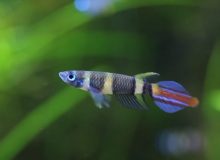
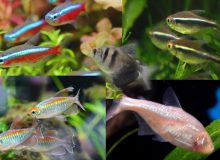
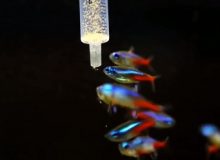
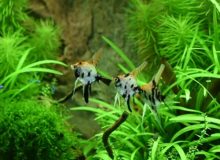
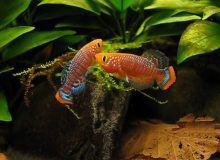

Leave a Reply